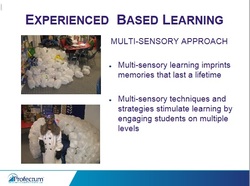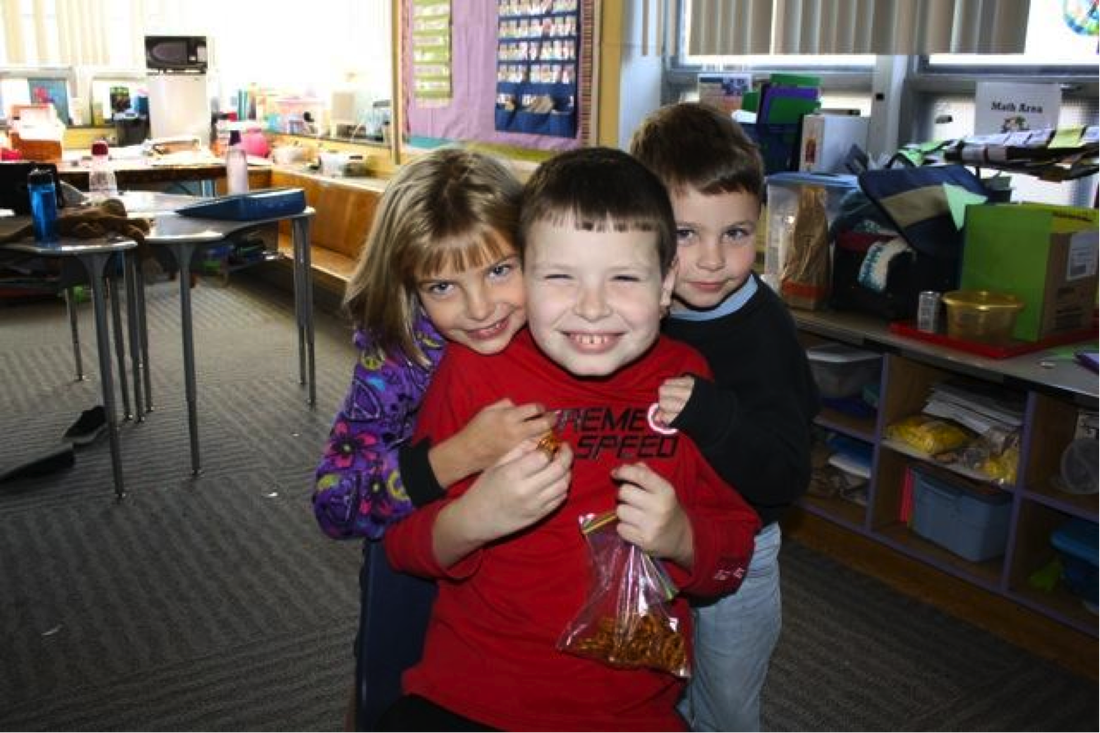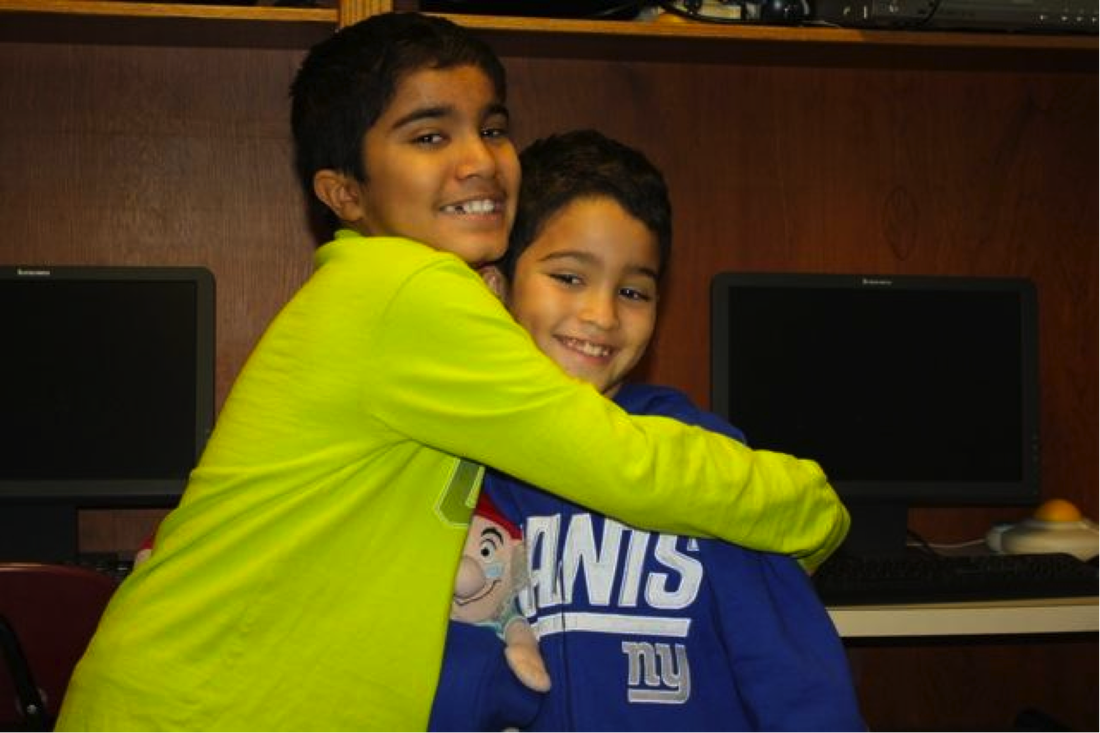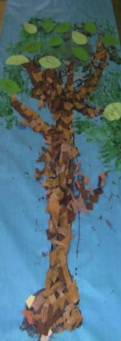|
As a teacher, I am always looking for ways to make my lessons fun, exciting and motivating. I work and prepare, I prep and review. A ton of work and time go into preparing each lesson but it’s the lessons that are learned when you least expect it, that make being a teacher the most rewarding job. It’s the smile on the face of my student who proudly brings me his completed work without having to be asked. Or the special moment when one student touches the shoulder of his friend to let him know it’s his turn all on his own. It is the giggling and laughing from the students when they are dancing with each other or bouncing on the huge, blow up pillow and taking turns but don’t even realize it. Not only am I teaching lessons but there are many lessons my students have taught me that I have had to remind myself to use with my own children. For instance, they have taught me that it is far better to be patient with my own kids and give them time to do what I ask and most likely it will get done. I also must remind myself that I want my children to be independent, so I need to stop doing for them and have them do it themselves. My students have also taught me that it’s not always the words that are spoken, but the proud moments and huge smiles on their faces that speak the loudest. I know I am learning just as much from my students as they are learning from me. I often ask myself, “Who is the teacher here?” (Janean Mancini, Teacher, Celebrate the Children)
2 Comments
To prompt or not to prompt?….that is the question. Prompting is the new four letter word in special education and should be avoided at all costs right? The true answer to this question lies in the setting in which it is used, the goals and objectives of the teacher and whether that teacher has a clear understanding of how to achieve those goals and objectives within their discipline.
In the pursuit of academic endeavors, teachers and parents of special needs and typical children know all too well the dangers of giving away the answers and doing things for children when they are capable of doing these things themselves. Too much prompting in these activities can absolutely be counterproductive to thinking and independence. These tasks are typically cognitive in nature and may involve fine motor skills, such as writing or keyboarding. When learning physical/gross motor movements, as in Physical Education classes, prompt dependence does not occur if physical prompts are executed skillfully and eventually faded. After the repetition of a skill using physical prompting/assisting, the prompt should be gradually faded until the student begins to embody the skill for the first time and begins to feel how to execute it correctly, thereby gaining a deeper sense of mastery. This is all done with the utmost respect for each student’s free will and personal boundaries. I do not ever “force” a student to receive physical prompts, however, I do encourage it. I’ve used these techniques for years with special needs and typical students ranging in age from 3-65, and have documented their excellent progress. Physical prompting is just another name for what’s widely known and regularly used in yoga classes all over the world as an adjustment. I’ll refer to them simply as assists. Physically assisting/prompting with gross motor skills differs from prompting in the classroom mainly due to muscle memory and gravity vs. cognitive understanding. Verbal Instructions, Modeling/Mirroring, Physically Assisting, Fading The Assist Verbal instructions followed by modeling/mirroring the task for the students are naturally the first choice in teaching motor tasks and many students may learn them easily this way. For those who don’t, physical assists/prompts may be required and is a beneficial and valid tool to help anyone, whether special needs or typical, learn or improve upon gross motor skills. Dr. Wachs uses this method, as do most adaptive PE teachers, physical therapists, yoga teachers and coaches. Physical assists, gradually faded, give many students with motor planning challenges the opportunity to learn a motor skill that they otherwise wouldn’t be able to execute on their own. Rhythm & Timing Every student is uniquely different and may need an assist in one skill but not in another. Many students will fall into a relaxed rhythm and timing with the person assisting them as they begin to connect with the movement through repetition. It’s the same concept as rocking a baby, swinging on a swing or going for a long walk or run. Repetitious physical movements, whether passive or active, are paradoxically relaxing and invigorating at the same time! Anyone who’s ever received a Thai Yoga massage can attest to this. Older students who’ve never been taught this way may tolerate or only need 1-2 prompted tennis swings while others can handle and may benefit from 50 swings initially. The resulting joy, self-confidence and self-esteem I see when a student is able to accomplish a physical skill that they’ve only ever been able to watch others do before is worth the effort! Muscle/Motor memory According to the American Coaches Association, muscle memory is “the result of teaching the muscles how to perform a specific activity and repeating that activity until it can be done freely without methodical thought”. It is the neurophysiological response to the repetition of gross motor tasks. In other words, the brain and body connect better when a physical demand is placed on it regularly. The more repetitious the task, the deeper the neurological pathway becomes and the less one will have to “think” about doing the task. Let’s use dribbling a basketball as an example. A very skilled basketball player who practices the sport daily doesn’t have to think about dribbling because the neurophysiological pathway for dribbling is deeply engrained. He or she is then able to use brain resources for strategy. The muscles aren’t really remembering, but rather the brain is, and is able to send a clear, strong signal to the muscles to execute the correct response. Creating a strong foundational muscle memory and body-brain connections is of paramount importance to academic success, according to Dr. Wachs in his book, Thinking Goes to School. In the same way that the basketball player isn’t consciously thinking about dribbling, the student who doesn’t have to consciously think about how to sit up in a chair, or where his or her body is in relationship to the pencil, paper and desk is better able to use their brain resources for academic endeavors! Once a student no longer has to think so long and hard about how to do the basic skill, then the brain is potentially able to learn and process the nuances of the sport, such as rules and strategies, thereby affording greater social opportunities. We DO want our students to think about the deeper things in life, which is precisely why we do NOT want them to have to think about movements that we take for granted. This is where physical assists may be needed so that they can feel in their bodies what they are being asked to do. If left on their own with just verbal instructions, many special needs students would simply never be able to participate because there’s no established neural pathway, or “dialogue”, between the brain and the body for the motor task given. Sadly, this is what often happens to students when they’re mainstreamed into typical PE classes, or left alone for “processing time”. This so often leads to the student doing nothing and feeling discouraged. Even if the student cognitively understands the instructions, they may not be able to effectively make the movement happen. This applies to a large percentage of typical adult learners too. How many of us have felt “uncoordinated” when doing something new? The difference is that a typical learner can more easily take command of the body brain continuum at will. Even then, it’s not easy. Imagine how our students feel! Gravity When teaching sports, Adaptive Physical Education teachers use adapted equipment such as bigger, slower, flatter balls, balloons and other modalities to give students more time to make contact. Even the slowest moving balloon, however, will not stop moving in order to give a student extra processing time! Any physical endeavor is subject to the gravity of one’s own body weight. This may be the clearest differentiation between academic learning and motor learning. Motor learning is subject to the laws of gravity where as pure academic/cognitive learning is not! We may need to help the student connect with a falling or fast moving object to help increase their reaction time by assisting them in doing the skill repeatedly. In coaching it’s called a drill. This repetition gives his or her body the feedback needed to create a new neural pathway in the brain for the task. It works the same way for us too. The more often we do a motor task, the more skilled we become at it. Aren’t 30 year olds better drivers than 16 year olds? Practice is just another word for repetition. A physical assist provides students with the correct body position, motion, timing and repetition that they may not be able to initiate or maintain on their own. It allows the student to actually DO and FEEL the practice. The neurons firing in the brain during motor movements don’t know that the movement is being assisted. From a neurophysiological perspective, all that matters is that the movement happens. Of course, the student is consciously aware of being assisted and for this reason it should be done with the utmost respect for the student and their tolerance level. Ultimately, carefully designed and executed Physical Education classes help to lay down the foundation for academic success. Additionally, physical activity and sports provide the student with widely known health, social and affective benefits. Of course, the time frame in which this happens will vary widely in each student according to his or her individual cognitive and physical abilities. No single modality, Physical Education being among them, is a panacea for ASD. The activities that are chosen in a specialized Physical Education program and the methods used to teach them are one of the many holistic supports used to help foster success in our students’ education. Each one is not an end unto itself, but rather an important piece of the ASD puzzle. Physical Education has the potential to positively impact the lives of special needs students or not do much at all, depending on the methods used, and the level of support and respect it receives. (Wendy Beffert, Health & Physical Education Teacher, Celebrate the Children) Sources: Thinking Goes To School, Hans G. Furth and Harry Wachs, Oxford Press, 1975) Visual/Spatial Portals to Thinking, Feeling and Movement, Serena Wieder, Ph.D. & Harry Wachs, Profectum Foundation, 2012
We all see things differently. We all have our own unique perspective. I am not on the backside of your eyeballs. I don’t know how you perceive the world nor do you know how I really perceive the world.
We all can be artists because we all have great individual perspective. But a successful artist, visual or otherwise, must communicate their perspective to others through their medium. So for me, that would be painting, sculpture, and drawing; for a musician, it is music; for a dancer, it’s a dance, movement, theatre, drama, production. And also literature is art. It’s something emotional, a perspective. We need to get students to be able to communicate, non-verbally in my case, also through mediums, artistic mediums. So this is the dilemma. Every art teacher has to go to school, you learn, you know what it is to be an artist, you get to class and the kids are all like, “teach me how to draw like you” and you sit there and it suddenly hits you like a ton of bricks… I can’t teach anybody how to be an artist. Why? Because it’s praxis. It’s an internal process. It’s hand-eye coordination, ideation, motor planning and execution. So what do I do? What is my role? My role is to guide and facilitate. I am kind of like the art tour guide and since I like metaphors, and I like visual metaphors, I am your art tour guide. (Mary Beth Scheerer, Art Teacher, Celebrate the Children) Many times we find ourselves questioning our life decisions or rushing time by counting the days until the weekend. By living in the past or the present it is easy to become wrapped up in a world of anxiety and doubt. As educators, parents, students, and people in general, we face many difficult decisions and challenges, but once in a while we have to step back, take a deep breath and smile for what every moment may bring.
In today’s world, it becomes so easy to get caught up and only focus on the outcome. This is where Greenspan reminds us that it is not the product that matters, but more so the process. The most memorable experiences we can give our children, are those that have indulged all of their senses, highlighted their passions and reached them in a way that can never be forgotten. Some may view this as work; however, it’s as simple as putting reality aside and making time to play. (Laura Baldwin & Antoinette Price, Lead Paraprofessionals, Celebrate the Children) “This is the real secret of life -- to be completely engaged with what you are doing in the here and now. And instead of calling it work, realize it is play.” ― Alan Wilson Watts Playing Soccer is the perfect time to focus on the foot/ankle complex in Physical Education. Along with good core strength, the feet are literally our foundation. They connect us with the earth and ground us energetically. They provide the gross physical structure for balance, along with the intricate vestibular system. What looks like an ordinary soccer warm-up for the hips by lifting the legs and tapping on the inside and outside of the feet, is really designed to bring students' awareness to this often ignored body part. Dribbling, the most fundamental skill in soccer, is practiced not only as a way to improve upon soccer skills, but to help with this body awareness referred to by Dr. Wachs in Thinking Goes To School, as the “Mental Map of the Body” and also known as Motor Planning. Each tap of the soccer ball to the foot provides important feedback to the brain about where the feet are in relationship to the body and to surrounding objects.
Additionally, there is a very important eye tracking (and subsequent eye-foot coordination) element happening here, which Dr. Wachs describes as a vital element in academic endeavors. As students dribble the ball from right foot to left and change direction they are developing “Coordination of Body's Axes” (Wachs) also known as “Laterality and Directionality”. Further, practice with turning the feet in and out can also help to overcome certain unwanted reflexes so that other movements become more purposeful (See Wieder & Wachs Visual/Spatial Portals to Thinking, Feeling and Movement). Finally, soccer practice (and sports/physical activity in general) in and of it self, provides students with a useful and appropriate outlet for physical expression, which is innately at the core of our being. Who knew? (Wendy Beffert, Physical Education Teacher, Celebrate the Children) Students can experience difficulty transferring learned skills from one environment to another. Therefore, Community-Based Instruction is an integral part of our curriculum at CTC. Community-Based Instruction allows students to enhance their functional skills within a natural community setting, where such skills are used, in order to ease and enhance transitions to independent living, community participation, and employment.
A simple visit to a local store could become a great learning experience. Recently, my middle-aged students paid a visit to TJ Maxx. The assignment at TJ Maxx was to find items that would complete a "dress up" occasion outfit. This led to a class discussion about what occasions would require a suit, a tuxedo, or just a dressy shirt. This discussion led to another discussion about when it was appropriate for a boy or man to wear a tie. We considered which special occasions required a tie, and also which occasions required us to present our "best self" (possibly with a tie) such as a job interview. Our discussion culminated in a tie-tying activity where each student was given a necktie and then given verbal and modeling instructions on tying a Windsor Knot. Each and every boy in the class showed complete interest in the activity and all students were determined to learn this skill. To remember this fun and useful activity, we took a class picture with each student wearing a tied tie. Experience-based learning activities can be used at home and at school. It’s easy to create great learning experiences where the kids (and you) will have fun! (Kelly Reilly, Teacher, Celebrate the Children)  It’s only the end of September and students, teachers and parents are already asking me if my classroom is building the igloo this winter. Of course we will be!! Every year, my students collect over 300 gallon-sized jugs starting in October to build a life sized igloo in the winter months. This is a perfect example of how I foster experienced-based learning in my classroom. During the cross curricular subjects of the Arctic, students are actively engaged in learning and obtaining a deeper knowledge of the subject. From past experiences, it is evident that they retain the knowledge gained through this approach far more readily than through traditional textbook-centered learning. Last year, I was lucky enough to present at the First New Jersey Educator’s Conference titled, “Raising the Bar: Educational Approaches that Go Beyond the Labels”. My presentation focused on the difference between facilitating “discovery” and “teaching” in the classroom. The workshop looked at how through asking the right questions and providing specific kinds of experiences, educators can assess a child’s foundational capacities that support the comprehension of academic content. In order for children to internalize concepts, they must make them their own. Providing opportunities for the “discovery” of the “meaning” of concepts allows even the most diverse learners to develop true comprehension and knowledge. During the presentation, I showed the process of the life-sized igloo in my room. I explained that although I provided the students with the jugs, I had them discovery how to build it through trial and error. Then once they built it, I asked many thought provoking without telling the students all about igloos. They asked questions and I helped scaffold questions to lead them to problem solving a solution. I leave you with this thought. Wouldn’t it be great if all schools could put the textbooks down and have the students participate in high impact lessons inclusive of emotional components? Then they could capture and tap into the students’ affect and interest, thus supporting deeper connections and understanding of targeted concepts. I am lucky that Celebrate the Children allows me to use experienced based teaching in my classroom. It was nice to start the year reflecting on my teaching methodology. I will be sure to share a picture of our igloo this winter including some of the questions my students ask and some of the questions I will ask to get them problem solving. (Jennifer Robak, Teacher, Celebrate the Children) Progress must start with a relationship. We want to support children to become happy, secure, social and creative people, who can think outside the box and think on their feet. We must respect and support each child's unique profile while promoting development through meaningful, relationship-based experiences. The relationships that support this development are built on respect and trust. For children who experience the world in an often disorganized and sometimes fearful way, these trusting relationships require patience and nurturing. A key component to the approach at Celebrate the Children is the involvement of families in the intervention. Sometimes this simply starts with helping the parent and child get back to a place where they can enjoy each other again rather than solely focusing on the challenges. Once we have taken the time to get to know the child and learn about the unique way in which they experience the world, we can support them in reaching higher levels of development. Autism is a sensory-processing disorder, not an intellectual disorder. Many ASD children are highly intelligent and often gifted. Therefore, if we can make a connection with them, we can tap into all the wonderful gifts they have to offer. We target development from the foundations of self-regulation and engagement, all the way through emotional and abstract thinking and reflection. The most recent research in the field of autism now supports the notion that critical neurological connections are made when children are engaged in pleasurable and meaningful interactions with their caregiver.
|
AuthorsContributions to this blog are made by Celebrate the Children's highly talented, interdisciplinary team and wonderful families. Archives
January 2022
Categories
All
|
|
OUR SCHOOL
|
UPCOMING EVENTS
Ride For Autism
Saturday, May 4, 2024 Let's Play! 20th Anniversary Gala
Thursday, May 16, 2024 |
CONTACT
230 Diamond Spring Road
Denville, New Jersey 07834 ph: (973) 989.4033 fax : (862) 244.4969 |
|
Interested in learning more about our program?
|
Anti-bullying Coordinator:
Jennifer Carucci jcarucci@celebratethechildren.org 973-989-4033 Ext 413 |
2023 Celebrate the Children




 RSS Feed
RSS Feed

